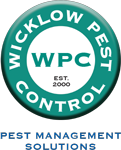Netting and Proofing
Netting and Proofing – Population control
Reduction in numbers by one of the approved methods, shooting, trapping, etc will provide only short-term relief. This method should only provide temporary relief until proofing work is complete, or to clear derelict buildings of pest birds prior to demolition.
Management of pest birds can be divided into three distinct categories:
Reduction/removal of food sources
The number of birds in an area will be directly influenced by the food source available. Therefore, good waste management and discouraging members of the public from feeding the birds (mainly feral pigeons will naturally reduce the bird numbers over a period of time.
Removal of roosting sites
Design of new buildings should take into consideration ledges, windowsills, and any other feature that might provide roosting sites for birds. An angle of 45 degrees or more will prevent birds from roosting. Maintenance of existing buildings should be carried out to remove potential ingress points for feral pigeons. These would include missing roof tiles, broken windows and areas where maintenance work has been carried out and holes left in the fabric of the building.
Roofs should be designed and detailed specifically to exclude birds by keeping all gaps and openings below 20mm
Proofing against birds nesting and roosting
Proofing measures such as netting and stainless-steel spikes can be used to deter birds from roosting on buildings.
Netting mesh sizes for bird proofing will vary according to the species of bird. As a guide, the following mesh sizes are recommended:
- Sparrows and similar size birds – 19mm mesh size
- Starlings – 28-30mm mesh size
- Pigeons – 50mm mesh size
- Gulls – 75mm mesh size
Spike systems will deter birds from roosting on ledges that cannot be made inaccessible by netting. They should be fixed in a manner that will ensure that the ledge is adequately covered by the spikes.
Bird proofing is specialist work. An experienced installer should be consulted for advice and proofing strategies.
It should be noted that birds other than those listed on the general licenses cannot be prevented from accessing their nest site during the breeding season. To do so would be a breach of the Wildlife Act 1976 and prosecution could follow.
Urban bird pest control is a complex subject and requires an integrated approach which will include waste management regimes to minimize attractive food sources; maintenance and design of buildings that will reduce potential roosting and nesting sites and proofing strategies that will exclude pest birds from priority areas.
Contact Our Pest Control Experts Today!
contact us
Do You Have Any Questions?
If you wonder if we deal with a specific pest issue… then we probably do, so please ask us. We are there to help!
